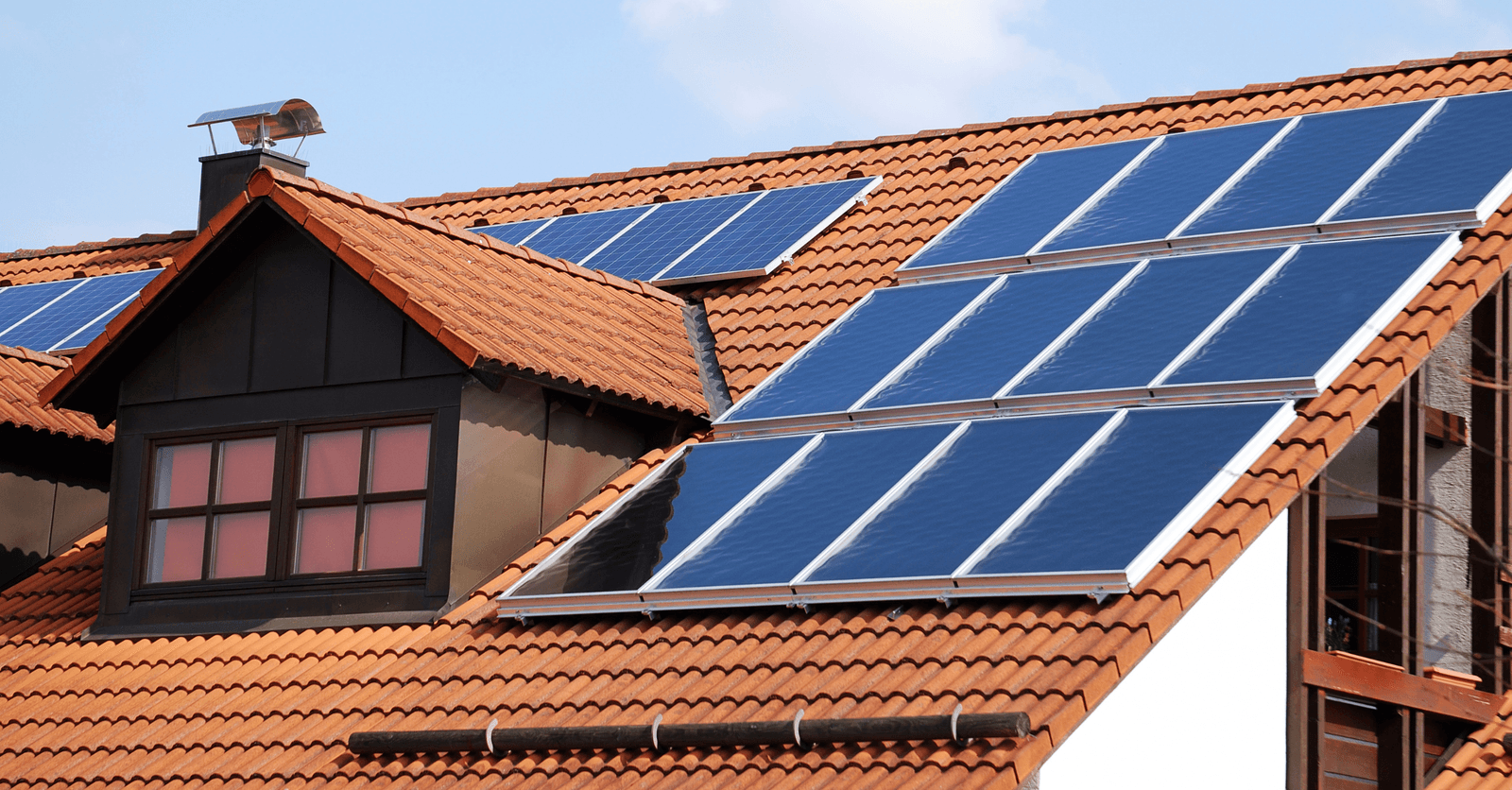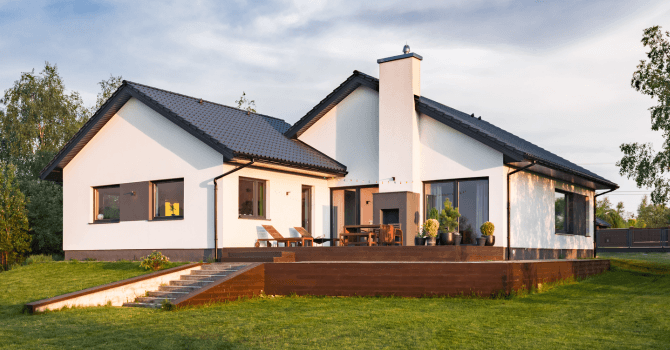Ducted Heat Pumps - A product adapted to your needs?
By Editorial Team
Updated on April 7, 2025

Are you looking for an efficient and discreet solution for your home's thermal comfort? The ducted heat pump is a high-performance option that ensures optimal comfort throughout the year. Unlike wall-mounted models, it is integrated into ventilation ducts, making it virtually invisible. How does it work, and what are its advantages? Here’s everything you need to know about this system to make an informed choice!
What is a ducted heat pump and how does it work?

Source : Soumission Rénovation
A ducted heat pump, also known as a ductable heat pump, is a hybrid system between the wall-mounted split heat pump and the centralized air distribution system. It consists of an outdoor unit and an indoor unit integrated into a network of air distribution ducts. Warm or cool air circulates through these ducts and exits through vents in desired rooms, offering more uniform thermal comfort compared to a wall-mounted heat pump.
Why choose a ducted heat pump system?

Source : Groupe Jinvest
The ducted heat pump offers numerous benefits, making it an attractive option. It combines efficiency, comfort, and discretion, making it particularly suitable for modern homes. Here are its main advantages:
Uniform distribution of heating and cooling.
Ability to serve multiple rooms with a single indoor unit.
Visual discretion, as the indoor unit can be hidden in a ceiling plenum.
Quiet operation.
Key Advantage
The primary advantage of a ducted heat pump is its ability to provide more uniform distribution of warm or cool air across multiple rooms, even with closed doors. This resolves the uneven distribution issue often encountered with wall-mounted heat pumps.
Disadvantages
Despite its many advantages, the ducted heat pump also has some drawbacks to consider before making your choice:
Potentially higher installation costs compared to other types of heat pumps.
Requires sufficient space for duct installation.
May need auxiliary systems for extreme cold, such as electric baseboards.
Comparison with Other Heat Pumps
Ducted Heat Pump vs Wall-Mounted Heat Pump
Distribution: The ducted model offers more uniform distribution across multiple rooms, while the wall-mounted model is limited to specific zones.
Installation: The ducted model requires duct installation, whereas the wall-mounted model is simpler to install.
Visibility: The ducted unit is more discreet as the indoor unit is hidden, unlike the visible wall-mounted unit.
Ducted Heat Pump vs Centralized Heat Pump
Size: The ducted model is generally more compact and can be installed in smaller spaces.
Efficiency: It often performs better and is more energy-efficient than standard centralized systems.
Flexibility: The ducted model allows localized installation, while centralized systems are designed to heat or cool the entire house.
Learn more about wall-mounted and central heat pumps.
Installation Process

Source : Climatisation NDS-pro
Required Materials and Equipment:
Outdoor and indoor units of the heat pump.
Ventilation ducts.
Air vents.
Thermostat.
Mounting and connection tools.
Installation Steps:
Determine locations for indoor and outdoor units.
Install the indoor unit in the plenum or attic space.
Set up the duct network.
Install air vents in desired rooms.
Mount the outdoor unit.
Complete electrical and refrigerant connections.
Install the thermostat and conduct functional tests.
Professional Assistance
It’s recommended to hire a certified HVAC professional for installing a ducted heat pump. This ensures compliance with standards and optimizes system performance.
Practical Tips:
Ensure your home is well insulated before installation to maximize efficiency.
Choose an appropriate location for the outdoor unit, away from walkways and windows, to reduce noise.
Select a heat pump model designed for Quebec’s climate, capable of efficient operation in cold weather.
Maintenance Tips

Source : Soumission Rénovation
Methods:
Clean or replace filters regularly (every 1–3 months).
Inspect and clean ventilation ducts annually.
Check air vents to ensure they’re not obstructed.
Schedule annual maintenance by a professional.
Common Repairs:
Filter replacement.
Cleaning evaporator and condenser coils.
Checking and refilling refrigerant if necessary.
Repairing or replacing fans.
A Discreet Yet High-Performance Choice

Source : Soumission Rénovation
Ducted heat pumps are an effective and discreet heating and cooling solution. They offer uniform air distribution across multiple rooms, enhanced energy efficiency, and are suitable for homes without pre-existing central ventilation systems. While installation may be more complex and costly than other options, their long-term benefits in terms of comfort and energy savings make them a wise choice for many households.
If you’re currently exploring heat pump options, consider learning more about available brands, prices, and financing possibilities:
FAQ
Does Daikin offer ducted heat pumps?
Yes, Daikin manufactures ducted heat pumps. However, it's recommended to verify specific models available in your region (e.g., Quebec) for compatibility with local requirements.
What is the best ducted air conditioning system?
The best system depends on your specific needs, home size, and budget. Compare models from reputable brands like Mitsubishi Electric, Fujitsu, or Daikin based on factors such as energy efficiency and performance in cold weather.
What’s the advantage of a ducted system over multi-split systems?
A ducted system provides more uniform air distribution and discretion compared to multi-split systems. It can heat or cool multiple rooms with one indoor unit, offering aesthetic and practical benefits where wall-mounted units are less desirable or feasible.
What is a mini-split duct (aka ductless system)?
A mini-split duct is a heating and cooling system that operates without traditional ductwork. Instead, it uses refrigerant lines to transfer heat between an outdoor compressor and one or more indoor air handlers. This setup allows for efficient, targeted temperature control in specific areas, making it a flexible and energy-efficient alternative to central HVAC systems.
Looking for something else?
Related articles
The latest industry news, interviews, technologies, and resources.

Editorial Team
•15 Apr 2024
Effective and economical, heat pumps are one of the most sought-after heating and cooling systems. Yet, there is one lingering question: How does this device work exactly? This article details the fundamental workings of a heat pump, its advantages for your home, and how to choose the model best suited to your needs.

Editorial Team
•04 Feb 2025
Recently, home renovations are occurring with sustainability, eco-friendly and alternative energy methods at the forefront. As the homeowner knows, most homes have central heating, whether that be a warm air system, radiator or a boiler. Unfortunately, these systems are not energy efficient, consuming copious amounts and making heating larger homes costly.

Editorial Team
•07 Nov 2023
In Montréal alone, it’s estimated that approximately 300,000 residents are affected by a high level of lead in their water, in particular, due to the pipe connecting their home to the city’s water system. In 2007, the City of Montréal, therefore, committed to changing all of its lead water pipes in the public sector, totalling around 48,000 by 2030, recently investing about $557 million to accelerate the project.

Editorial Team
•07 Nov 2023
When we purchase our first home, everything seems perfect. Of course, over time you live there, grow your family and build a cocoon to call your own. Over the years, your home evolves with you, and while it may be subtle, it can age quickly.

Editorial Team
•03 Nov 2025
Whether for your growing family, for the arrival of a long-term house guest, or simply due to a lack of space, the reasons behind building a home addition are plentiful. Amongst the many possible solutions presented to those wishing to build a home extension, there is the home addition on screw piles.